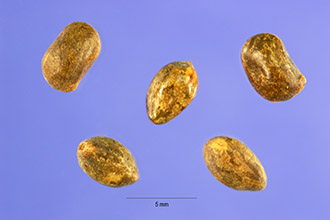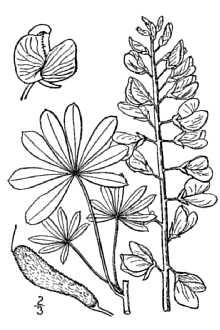Sundial Lupine
Scientific Name: Lupinus perennis L.

| General Information | |
|---|---|
| Usda Symbol | LUPE3 |
| Group | Dicot |
| Life Cycle | Perennial |
| Growth Habits | Forb/herb |
| Native Locations | LUPE3 |
Plant Guide
Alternate Names
wild lupine, lupine , Use soil moisture sensors to measure the soil moisture of Sundial Lupine.
Uses
Ethnobotanic: The Menomini fed this plant to horses to make them spirited and full of fire. They also rubbed the plant on their own hands or other parts of the body in order to control horses. The Cherokee made a cold infusion from the plant and used it as a wash to check hemorrhage and vomiting. Wildlife: Sundial is the only food for the larvae of the Karner Blue butterfly (Lycaeides melissa samuelis). Both fire suppression and habitat loss have contributed to the decline of the lupine and the butterfly. The Karner Blue is nearly extinct over much of its range.
Status
Please consult the PLANTS Web site and your State Department of Natural Resources for this plant’s current status, such as, state noxious status, and wetland indicator values.
Description
General: Bean Family (Fabaceae). This herbaceous perennial has erect stems that are 2-6 dm, that are thinly pubescent. The petioles are 2-6 cm. The leaves are palmately compound. The leaflets are 7-11, oblanceolate, and are from 2-6 cm. The flowers occur in terminal racemes, arising above the leaves. They are numerous, ranging from blue to pink or white. The fruits are pubescent pods that are oblong, flattened, and with 2-several seeds. They are 3-5 cm. © Kenneth Sytsma University of Wisconsin @ Atlas of Florida Vascular Plants
Distribution
For current distribution, please consult the Plant Profile page for this species on the PLANTS Web site. This plant is found in dry, open woods and clearings from southern Maine to Florida, west to Minnesota and Indiana. The plant grows in Pine Barrens and sandy prairies in the east.
Establishment
Propagation by seeds: This lupine grows in areas that have been burned. Scarify the seed coat of each seed with sandpaper to make a gentle scratch. The seeds can then be soaked overnight in tepid water. Treat the seeds with a rhizobium inoculant before sowing them. Plant the seeds into cells or flats in a greenhouse and cover them with a quarter inch of soil over the top. Lupines succumb to root rot very easily in pots, so it is best to transplant them to the garden when they have two to three leaves. Seeds can also be cleaned and stored dry at 40° F for several months and then planted directly in the garden in the following spring (after scarification). Seed can be sown with a yard roller or by walking the site. Plant in full sun with good air circulation, in loose, well-drained soil. The plants can tolerate poor, sandy, or gravely soil, preferably acid. If no lupines have been present for many years on the site, wet the seeds and roll them in an inoculant for nitrogen-fixing bacteria before planting. They should germinate in about one week. The roots are strong and deep, making the moving of older established plants difficult. Cultivars, Improved and Selected Materials (and area of origin) LUPE3 is available through native plant nurseries within its range. Contact your local Natural Resources Conservation Service (formerly Soil Conservation Service) office for more information. Look in the phone book under ”United States Government.” The Natural Resources
Conservation
Service will be listed under the subheading “Department of Agriculture.”

